Hi, my name is Ruby. I am 19 and study geology. I came on this trip to experience learning in another country. This is my first time being away from home for this long. I’m getting pretty homesick at this point but we only have about a month left and I’m sure that after a week of being home I will wish I was back in Sweden again. Living out of a suit case this long is a serious talent and I am sure everyone else on the trip could attest to that. We have gotten extremely talented at keeping our things organized and living in hostels together. I think one of the best parts about living together is getting to wake up to my friends in the morning. The people on this trip make me laugh everyday and I am glad to be with such a fun group.
Last week we moved from beautiful Stockholm to an as equally beautiful Gothenburg. I personally was glad to come to a city that has big parks in it. Stockholm was a really great city, but I missed being outdoors in the nature.
On our first day here a bunch of us went to a large park right down the road from our hostel and romped around. In the park they have animals to look at such as moose, sheep, peacocks, deer, horses, rams, and some ducks. We went back to the park the next day as well because it has so much to see and do. Maybe this week we can get group rugby going there.
Our second day in Gothenburg we went to the university and had a short
geology lecture on plans for local sea level rise in the future. After that we went on a walking architecture tour of the city. I am not that into architecture but it was still nice to walk around and see all that the city has to offer. We even got to go up in a tower and see a birds eye view of the city. From the tower we could see the only amusement park in all of Sweden. Part of our tour was on a canal taxi. Being on a boat in the water is always nice so that was definitely my favorite part of the day. The walking tour ended in Haga where their is a lot of shopping and restaurants. A few of us tried to go see the organ in the church but it was locked. We only wanted to see the organ because we knew we were going to see an organ factory in the next coming week.
The third day here we went as a class to the Volvo museum. We went because Jeff said it was a very Swedish thing to do while in Gothenburg. It was pretty interesting. They had just about everything Volvo has ever made there and we watched a short video on the history of the company. It is funny that we went there and then later in the week we rented a blue Volvo to go on the geology field week. After the museum some of the group went to see an island and have lunch there. Another part of the group went to a museum that tells the history of Gothenburg. It was pretty cold out at the Volvo museum so I decided to go back to the hostel and get some things in order for my class schedule this coming fall. I wish I had gone to the island because when the kids got back they said it was really fun and much warmer there once they started running around.
The next day here, we had a free day. I went to see a fortress with about half of the group. It was beautiful there and we were able to run around and explore it for about an hour. After that some of the group went to go back to the same island as the day before. I knew I could not go because I had to start filling out job applications before the big geology week. Trying to find a summer job while abroad is very stressful but I have seen a few people on the trip already receive internships so I knew it was time for me to start looking.
The next morning we all packed our bags for the geology week.
Geology Week with Mark Johnson
During our time in Sweden we got the privilege of studying geology with Mark Johnson. Mark is a former professor of Gustavus. He is extremely talented and now works at the University in Gothenburg studying glacial geology. We were with him for five days and did a multitude of things including mapping the island Hållö and making other various stops around Eggby area.
The first two days we were on the island Hållö. This island was completely made of granite with gneiss xenoliths. The purpose of visiting the island was to learn about glacial movement and how we can identify that they were here and prove the way they moved thousands of years ago. We started by learning how to identify various p-forms such as crescentic gouges and fractures, striations, and potholes. Then we went over finding our location on a map using surrounding landmarks, and how to measure striation direction using a compass. We then split the island into five separate parts and mapped each glacial mark we found. When we complied our data on striation and crescentic gouge measurements, we found that the glacier was moving from the Northeast towards the Southwest. Because all of our data was uniform, we could conclude that previous glaciers marks were either weathered away or nonexistent and that this island itself did not obstruct the glacial movement.
Mapping the island was a great experience because we were also able to identify other geological phenomena’s that were not formed by glaciers. We saw dikes, which are igneous intrusions when there is a crack in the bedrock, and we saw xenoliths, which is a body of rock foreign to the igneous mass in which it occurs. It usually happens when there is a magma, and an already existing rock drops in.
The next three days were spent learning the geologic history of the area around Eggby. We saw landscapes that were created in the Mesozoic. These landscapes were large fracture valleys that were not affected by the later arriving glaciers. Other portions of the area were quit largely affected by the glaciers. This could be seen in the layering of the land. The layers started with peneplain gneiss at the bottom and then moved up to sandstone, alun (shale), kalksten (limestone), lera (clay shale), and at the top, diabase (basalt). They shorten this layered sequence to USAKL3 when discussing it as a whole. We visited outcrops of each of these layers and discussed how they were developed and later uncovered by glaciers, oceans, and uplift. At the shale and limestone outcrops we did some fossil hunting and found mollusks, cephalopods, gastropods, and evidence of evolution in trilobites. At one of the stops we made we saw entire outcrops of loose shells. These shells were originally used as a buffer in acidic farm land but the outcrop was later protected by Swedish royalty as an important piece of geologic history.
Another interesting piece of history was the Baltic Ice Lake, which was a large, freshwater glacial lake similar to Lake Agassiz in the U.S. The lake formed in the Baltic Sea basin as the glacier receded, and at the time it was higher than sea level. Around Mount Billingen, the ice wall melted and water broke through a crack and deposited tons of sediment as it drained into the ocean. Surprisingly, the flood did not change the landscape too dramatically but you can see the evidence in outwash plains.
In addition to the field work on the island and the geologic history we also saw evidence of subglacial streams in bedding layers and large till deposits. We also saw De-geer moraines, and a set of seven larger end moraines. We drove past many eskers and through one of the best examples of kame and kettle topography in Sweden. A random find that changed geologic history forever was pieces of meteorite in a limestone quarry. Scientists knew that Earth had been hit by a major meteor shower due to a collision in the asteroid belt but had little evidence. After this deposit was found scientists were surprised by the large quantity that had actually bombarded our planet. Even today, 50% of all meteors that fall to earth are still a result of that same collision.
Mark did a great job of explaining geology to the non-geology majors in our group. By the end of the week everyone had a great understanding of the history of our planet here in Sweden.
After five days with Mark, we met up with Magnus. Magnus is a good connection that Gustavus has and is also a good friend of the Jeremiason family. Magnus spent three days with us taking us on hikes and showing us an old castle made completely of limestone, a church built in the year 1100, and organ factory, and an old fortress. He helped us cook dinner and he trained a few of us students on a run. Magnus seems to know a bit about everything as he has lived in the area for over twenty years now.
While we were with Magnus we had the option to camp outside. It got below freezing the first night and everyone came inside around 6 in the morning to get some sleep before our hike. The second night only about six students went to camp outside and they stayed warm because they had extra sleeping bags from all the kids that didn’t go. Both nights we had a fire and were able to make smores which were absolutely needed and delicious.
Over all it was a pretty fun week but we were all happy to get back to Gothenburg to beds of our own. Now all we have to do is laundry and repack our bags…..again.
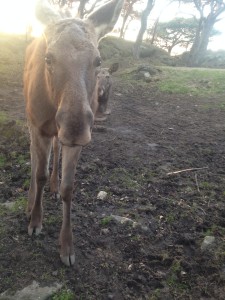

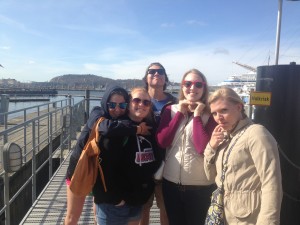
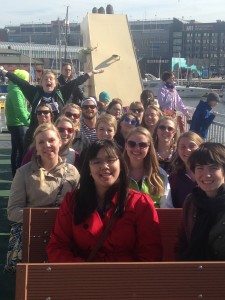






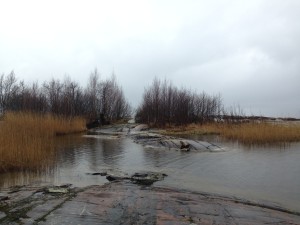
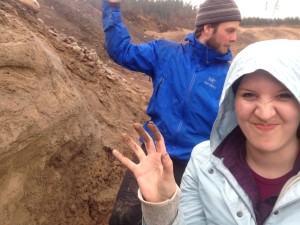

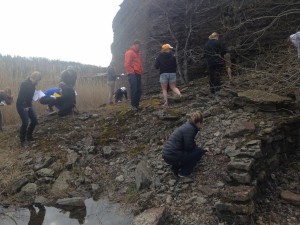



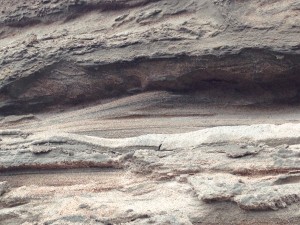


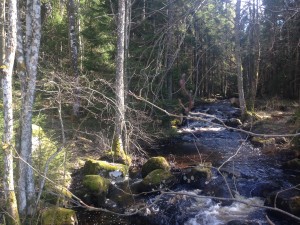


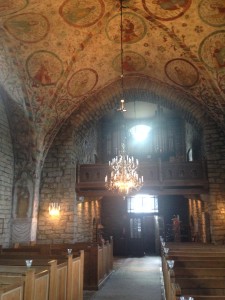

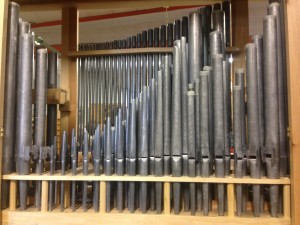
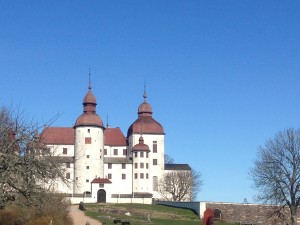

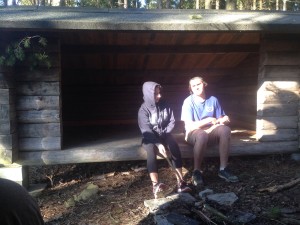

Such great pictures and recap, Ruby…I love your smarts and honesty!